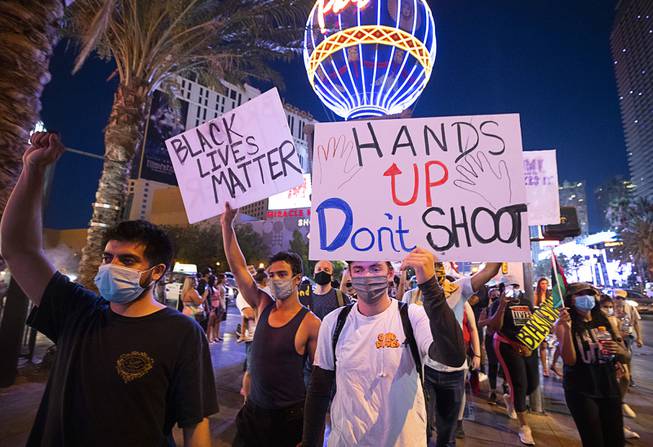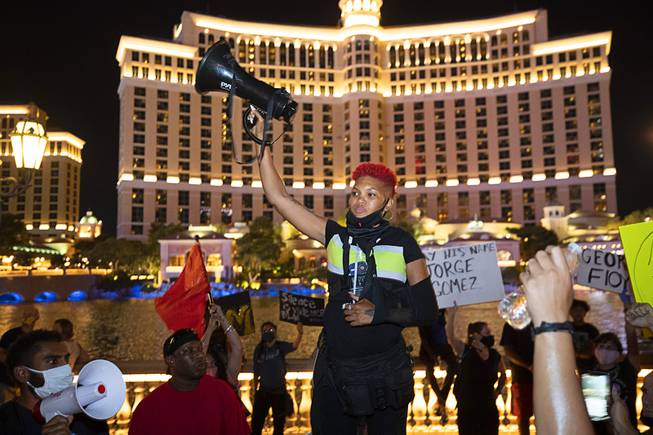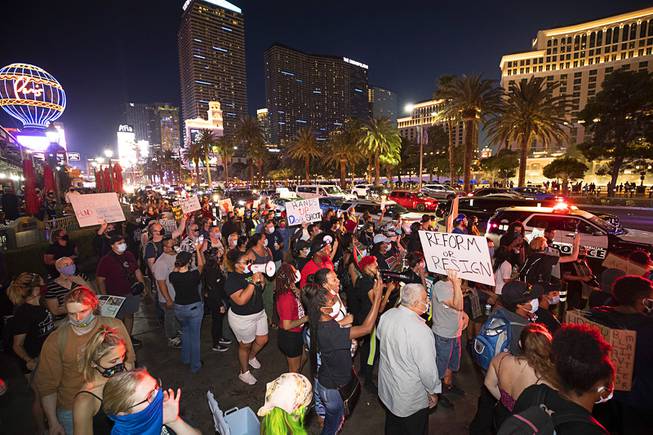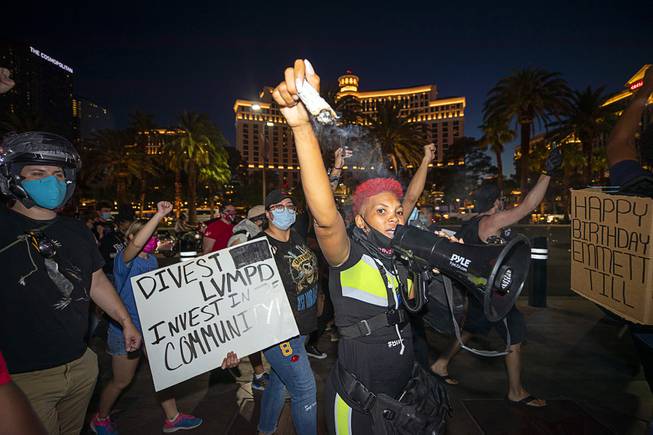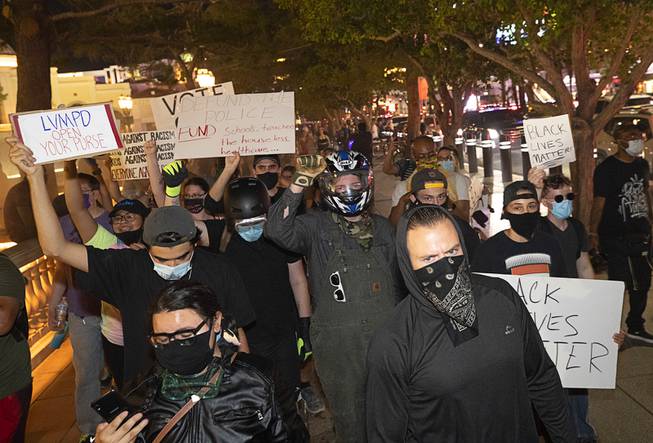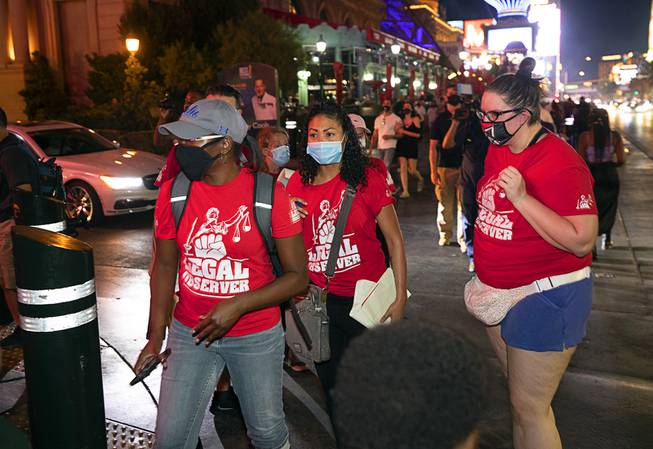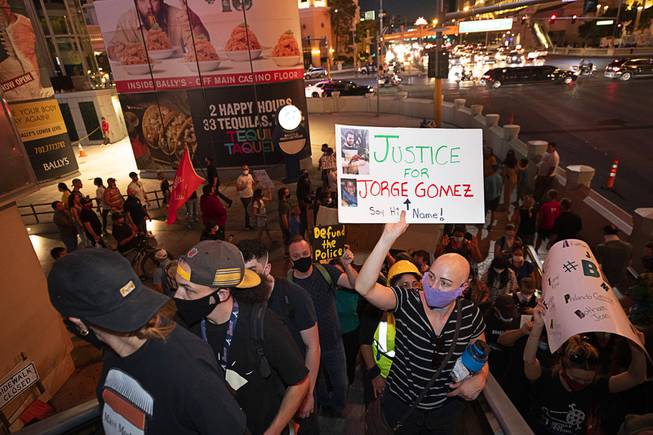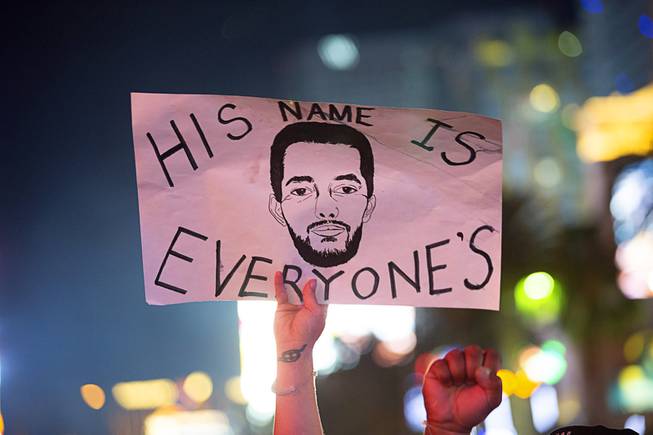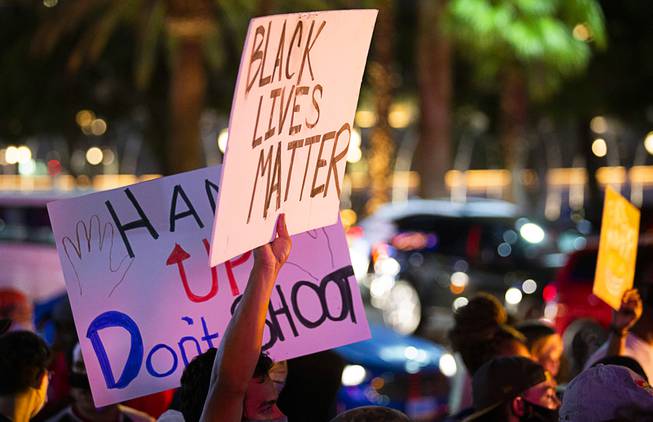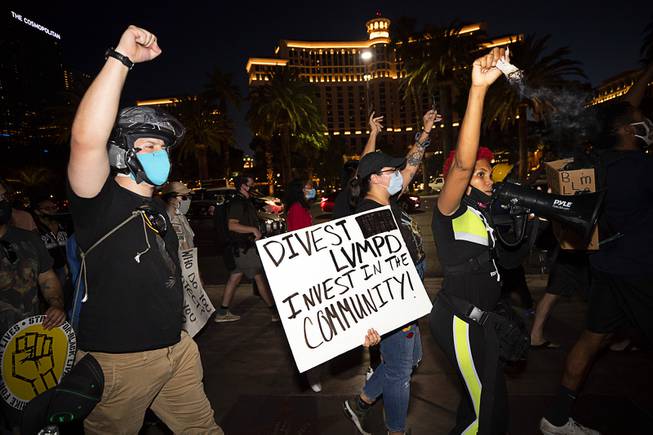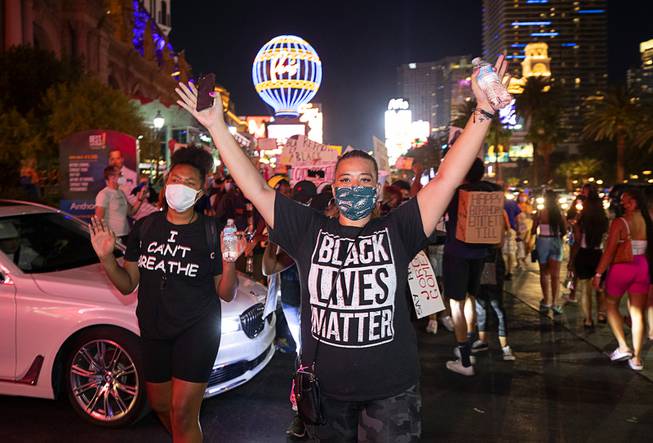It’s possible that I shall make an ass of myself. But in that case one can always get out of it with a little dialectic. I have, of course, so worded my proposition as to be right either way (K.Marx, Letter to F.Engels on the Indian Mutiny)
Sunday, July 26, 2020
Workers praise Disney virus safety, but will visitors come?
Published Sunday, July 26, 2020 | 5:26 a.m.
Updated 34 minutes ago
ORLANDO, Fla. (AP) — Every week, it seems, Kaila Barker, her husband and their five children change their minds about whether to travel from their home in Connecticut to Florida's Walt Disney World as planned in September.
On the one hand, the lack of crowds means more opportunities to go on rides without long waits. On the other hand, Connecticut and Florida have implemented pandemic-related quarantines for each other's residents and visitors, and the Barkers worry whether the Disney “magic" will get lost with mandatory mask-wearing for visitors and workers, temperature checks and no parades, fireworks shows or up-close “meet-and-greets" with costumed characters.
“We keep going back and forth. It's such a hard decision to make," Barker said last Tuesday.
Two weeks after Disney World started opening its theme parks for the first time since closing in March because of COVID-19, the Barkers' quandary affects not only Disney World's future but that of central Florida's tourism-reliant economy.
More than 75 million visitors came to Orlando in 2018, mostly due to its reputation as a theme park mecca, which also includes Universal Orlando and SeaWorld Orlando. But the coronavirus has upended Orlando's status as the most visited place in the U.S.
In the week that Disney World's Magic Kingdom and Animal Kingdom started welcoming back visitors, occupancy of hotel rooms in the Orlando area was down more than 60% from the previous year, a much deeper drop than the state as a whole, which declined more than 41%, according to STR, which tracks hotel data.
Less than half of Disney World's 43,000 unionized workers have been recalled to their old jobs, contributing to two Orlando-area counties having the state's highest unemployment rates last month — Osceola at 22.9% and Orange at 17.2%. Disney World has an overall workforce of 77,000 employees, the nation's largest single-site labor force.
Many of those still-furloughed workers are about to lose federal benefits at the end of the month.
“This is an extremely difficult moment,” said Paul Cox, president of the local union that represents stagehands and show technicians at Disney World. “There are still a majority of workers who are staying at home and they’re about to lose support. Things are going to get bad.”
Union officials estimate the Disney parks are no more than a third full, but that may be more by design to maintain social distancing. Disney World doesn't release attendance figures, but in pre-pandemic times its four parks and two water parks could host around 150,000 visitors a day.
Florida has had a surging coronavirus caseload recently, and other Disney parks around the globe have run into coronavirus-related roadblocks. Hong Kong Disneyland Park was forced to close earlier this month following the city’s decision to ban public gatherings of more than four people, and Disney's California parks delayed reopening while they awaited state guidelines.
Cowen Inc. estimated recently that Disney's parks and resorts won't return to pre-pandemic profitability until fiscal year 2025, and there is a “meaningful” probability that Disney World could close again because of the pandemic.
Leaders of the Disney World workers' unions describe the virus-related safety measures Disney has taken as “exemplary."
After workers complained about patrons walking around with their masks pulled down while eating food like turkey legs, Disney World updated its mandatory mask policy, requiring visitors to eat in one place while maintaining social distancing.
In response to other worker concerns, Disney has distributed personal hand sanitizer containers for workers to wear on their belts, added additional break rooms to limit the number of workers in them and reduced the number of riders on buses that shuttle workers from parking lots to the parks. Performers dressed as Disney princesses being driven in a horse-powered carriage through the parks now sit individually in rows separated by clear-plastic window partitions.
“Singing their praises seems so strange," said Julee Jerkovich, an official with a United Food & Commercial Workers union, which represents Disney merchandise and banquet workers. “As far as this grand experiment, I would have to say Disney has done a really good job."
But not all unions are happy. The union that represents actors and singers has filed a grievance with Disney World, saying their 750 members were locked out of returning to work after they complained about Disney ignoring their demands for getting coronavirus tests since they can’t wear masks while performing. Some performers, though, are eager to return to work and are pushing the union to reach an agreement with the company, as they worry about Disney replacing their shows with temporary ones featuring non-actors.
There have been isolated cases of workers and visitors connected to the theme parks getting sick with COVID-19, “but we haven’t seen any large number of positive cases that come from any of the parks,” Dr. Raul Pino, health officer for Florida's Department of Health, said last Monday.
Disney's policy of granting sick workers with paid time off so they can quarantine has made a difference, said Eric Clinton, president of Unite Here! Local 362, which represents Disney World park greeters, attractions workers and custodians.
But Clinton wonders if the current operating model can last until the pandemic is over, given that just over 20,000 of the 43,000 workers represented by unions have returned to work, only half of Disney World's 30 onsite hotels currently are back open and several in-park restaurants still are closed.
“Disney is a strong brand. They have a great product, but does the novelty wear off? Do people want to go to a theme park now? Is it more appealing with less crowds?" Clinton said. “I’m hopeful but nervous.”
—-
Follow Mike Schneider on Twitter at https://twitter.com/MikeSchneiderAP
Portland protesters breach fence around federal courthouse
By GILLIAN FLACCUS and SARA CLINE TODAY

1 of 11

There were demonstrations for police reform and against the increased presence of federal law enforcement in cities across the country Saturday. In Seattle, police declared a riot Saturday afternoon following large demonstrations and deployed flash bangs and pepper spray to try to clear crowds. Authorities made more than 40 arrests said 21 officers suffered mostly minor injuries.
Chuck Lovell, the Portland police chief, released a video message on social media Saturday night calling for peace.
“Across the country people are committing violence, supposedly in support of Portland,” Lovell said. “If you want to support Portland then stop the violence, work for peace. Portland police officers and police facilities have been threatened.
“Now more than ever, Portland police need your support. We want to be with you in the community and working on the real relationships that will create change. We want to get back to the critical issues that have been hijacked by people committing crimes under the cover of the crowds.”
Late Friday, a federal judge denied a request by Oregon’s attorney general to restrict the actions of federal police.

The Federal Protective Service had declared the gathering in Portland that began Friday evening an unlawful assembly. Harry Fones, a Homeland Security spokesman, said at a news conference Saturday afternoon some people launched large fireworks, threw hard projectiles and used power tools to damage property.
Craig Gabriel, Assistant U.S. Attorney for the District of Oregon, said at the news conference that of the six federal officers who were injured, one suffered a concussion and another was taken to the hospital for burns.
He said one person was arrested for failing to comply with orders. That person was later released without charges, bringing the total number of people arrested on or near the courthouse property since early July to 60.

 ___
___



By GILLIAN FLACCUS and SARA CLINE TODAY

1 of 11
Demonstrators shield themselves behind a toppled fence as federal officers deploy tear gas during a Black Lives Matter protest at the Mark O. Hatfield United States Courthouse Sunday, July 26, 2020, in Portland, Ore. (AP Photo/Marcio Jose Sanchez)
PORTLAND, Ore. (AP) — Authorities declared a riot early Sunday in Portland, Oregon, where protesters breached a fence surrounding the city’s federal courthouse building where U.S. agents have been stationed.
Police described via Twitter the “violent conduct of people downtown” as creating a “grave risk of public alarm.” Police demanded people leave the area surrounding the courthouse, around 1:20 a.m. Sunday, and said that those who fail to adhere may be arrested or subjection to teargas and impact weapons.
By 1:40 p.m., both federal officers and Portland police could be seen on the streets, surrounding the courthouse, attempting to clear the area and deploying teargas.
Protesters remained in the streets past 2:30 a.m., forming lines across intersections and holding makeshift shields, as police patrolled and closed blocks abutting the area. Multiple arrests were made, but it wasn’t immediately clear how many.
In the hours leading up to the riot declaration, thousands of people gathered in the city Saturday evening for another night of protests as demonstrations over George Floyd’s killing and the presence of federal agents sent by President Donald Trump showed no signs of abating.
Crowds began to march toward the city’s federal courthouse around 9:15 p.m., some marching from 5 miles (8 kilometers) away. A large group of demonstrators in the North Portland neighborhood also paraded by the police precinct there, which was roped off and had officers in riot gear standing outside the building.
Protesters paused outside a downtown hotel, where federal agents are staying, chanting “Feds go home” and yelling the names of Black people killed by police.
As protesters marched down the streets, the Portland Police Bureau posted on social media for people to not walk or block the street as they may be subject to charges such as disorderly conduct and interfering with peace officers.
Hundreds of others crossed the Steel Bridge around 11 p.m. to the courthouse, meeting up with thousands of people that had already been tear-gassed by federal agents.
The fence surrounding the building had flowers and banners draped across as federal agents emerged from the courthouse to inspect it. They were met with fireworks shot over the fence.
Federal agents tossed canisters of teargas at the crowd, while people ran towards the plumes, picked up some of the canisters and threw them back over the fence.
As some protesters attempted to cut the fence using power tools, streams of pepper spray were spewed at the crowd.
At the nearby Justice Center, images and words were projected onto the building including “Keep fighting. Keep pushing.”
During demonstrations the previous night federal agents repeatedly fired tear gas to break up rowdy protests that continued into the early morning Saturday. Authorities say six federal officers were injured and one person was arrested.



PORTLAND, Ore. (AP) — Authorities declared a riot early Sunday in Portland, Oregon, where protesters breached a fence surrounding the city’s federal courthouse building where U.S. agents have been stationed.
Police described via Twitter the “violent conduct of people downtown” as creating a “grave risk of public alarm.” Police demanded people leave the area surrounding the courthouse, around 1:20 a.m. Sunday, and said that those who fail to adhere may be arrested or subjection to teargas and impact weapons.
By 1:40 p.m., both federal officers and Portland police could be seen on the streets, surrounding the courthouse, attempting to clear the area and deploying teargas.
Protesters remained in the streets past 2:30 a.m., forming lines across intersections and holding makeshift shields, as police patrolled and closed blocks abutting the area. Multiple arrests were made, but it wasn’t immediately clear how many.
In the hours leading up to the riot declaration, thousands of people gathered in the city Saturday evening for another night of protests as demonstrations over George Floyd’s killing and the presence of federal agents sent by President Donald Trump showed no signs of abating.
Crowds began to march toward the city’s federal courthouse around 9:15 p.m., some marching from 5 miles (8 kilometers) away. A large group of demonstrators in the North Portland neighborhood also paraded by the police precinct there, which was roped off and had officers in riot gear standing outside the building.
Protesters paused outside a downtown hotel, where federal agents are staying, chanting “Feds go home” and yelling the names of Black people killed by police.
As protesters marched down the streets, the Portland Police Bureau posted on social media for people to not walk or block the street as they may be subject to charges such as disorderly conduct and interfering with peace officers.
Hundreds of others crossed the Steel Bridge around 11 p.m. to the courthouse, meeting up with thousands of people that had already been tear-gassed by federal agents.
The fence surrounding the building had flowers and banners draped across as federal agents emerged from the courthouse to inspect it. They were met with fireworks shot over the fence.
Federal agents tossed canisters of teargas at the crowd, while people ran towards the plumes, picked up some of the canisters and threw them back over the fence.
As some protesters attempted to cut the fence using power tools, streams of pepper spray were spewed at the crowd.
At the nearby Justice Center, images and words were projected onto the building including “Keep fighting. Keep pushing.”
During demonstrations the previous night federal agents repeatedly fired tear gas to break up rowdy protests that continued into the early morning Saturday. Authorities say six federal officers were injured and one person was arrested.

Demonstrators try to topple a steel fence during a Black Lives Matter protest at the Mark O. Hatfield United States Courthouse Saturday, July 25, 2020, in Portland, Ore. (AP Photo/Marcio Jose Sanchez)

A demonstrator tries to climb over a fence during a Black Lives Matter protest at the Mark O. Hatfield United States Courthouse Sunday, July 26, 2020, in Portland, Ore. (AP Photo/Marcio Jose Sanchez)

Federal officers advance on demonstrators during a Black Lives Matter protest at the Mark O. Hatfield United States Courthouse Saturday, July 25, 2020, in Portland, Ore. (AP Photo/Marcio Jose Sanchez)

Demonstrations have happened in Oregon’s largest city nightly for two months since Floyd was killed in Minneapolis in May. Trump said he sent federal agents to Portland to halt the unrest but state and local officials say they are making the situation worse.
There were demonstrations for police reform and against the increased presence of federal law enforcement in cities across the country Saturday. In Seattle, police declared a riot Saturday afternoon following large demonstrations and deployed flash bangs and pepper spray to try to clear crowds. Authorities made more than 40 arrests said 21 officers suffered mostly minor injuries.
Chuck Lovell, the Portland police chief, released a video message on social media Saturday night calling for peace.
“Across the country people are committing violence, supposedly in support of Portland,” Lovell said. “If you want to support Portland then stop the violence, work for peace. Portland police officers and police facilities have been threatened.
“Now more than ever, Portland police need your support. We want to be with you in the community and working on the real relationships that will create change. We want to get back to the critical issues that have been hijacked by people committing crimes under the cover of the crowds.”
Late Friday, a federal judge denied a request by Oregon’s attorney general to restrict the actions of federal police.

Demonstrators gather during a Black Lives Matter protest at the Mark O. Hatfield United States Courthouse Saturday, July 25, 2020, in Portland, Ore. (AP Photo/Marcio Jose Sanchez)
The Federal Protective Service had declared the gathering in Portland that began Friday evening an unlawful assembly. Harry Fones, a Homeland Security spokesman, said at a news conference Saturday afternoon some people launched large fireworks, threw hard projectiles and used power tools to damage property.
Craig Gabriel, Assistant U.S. Attorney for the District of Oregon, said at the news conference that of the six federal officers who were injured, one suffered a concussion and another was taken to the hospital for burns.
He said one person was arrested for failing to comply with orders. That person was later released without charges, bringing the total number of people arrested on or near the courthouse property since early July to 60.

PAGAN RESISTANCE LRP
 ___
___
PAGANS LOVE CIRCLE FIRES AND DRUMMING

Cline reported from Salem. Cline is a corps member for the Associated Press/Report for America Statehouse News Initiative. Report for America is a nonprofit national service program that places journalists in local newsrooms to report on under-covered issues.
___
Follow Gillian Flaccus on Twitter at http://www.twitter.com/gflaccus.
___
Follow Gillian Flaccus on Twitter at http://www.twitter.com/gflaccus.

Federal officers line up to deploy tear gas at demonstrators during a Black Lives Matter protest at the Mark O. Hatfield United States Courthouse Sunday, July 26, 2020, in Portland, Ore. (AP Photo/Marcio Jose Sanchez)

Federal officers launch tear gas at a group of demonstrators during a Black Lives Matter protest at the Mark O. Hatfield United States Courthouse Sunday, July 26, 2020, in Portland, Ore. (AP Photo/Marcio Jose Sanchez)
EYEWITNESS
Portland: A city under siege, overrun with anarchists? It's a far more complex picture
The only common ground in this complex picture is that no one can see how it is going to end.
By Sally Lockwood, correspondent in Portland, Oregon
SKY NEWS (A MURDOCH COMPANY0
Sunday 26 July 2020 UK

Portland: A city under siege, overrun with anarchists? It's a far more complex picture
The only common ground in this complex picture is that no one can see how it is going to end.
By Sally Lockwood, correspondent in Portland, Oregon
SKY NEWS (A MURDOCH COMPANY0
Sunday 26 July 2020 UK

Image:A demonstrator is detained at an anti-racism protest in Portland, Oregon
There is nothing straightforward about what is happening here in Portland.
After the arrival of federal troops this month it has morphed into something else.
There are still thousands of people who protest peacefully in support of Black Lives Matter each evening. But as night falls, a crowd surrounds the federal courthouse. Among them, a violent contingent who lob fireworks and push against the temporary metal fence separating the troops and the public.

There is nothing straightforward about what is happening here in Portland.
After the arrival of federal troops this month it has morphed into something else.
There are still thousands of people who protest peacefully in support of Black Lives Matter each evening. But as night falls, a crowd surrounds the federal courthouse. Among them, a violent contingent who lob fireworks and push against the temporary metal fence separating the troops and the public.

Image:Federal police are guarding the courthouse in downtown Portland
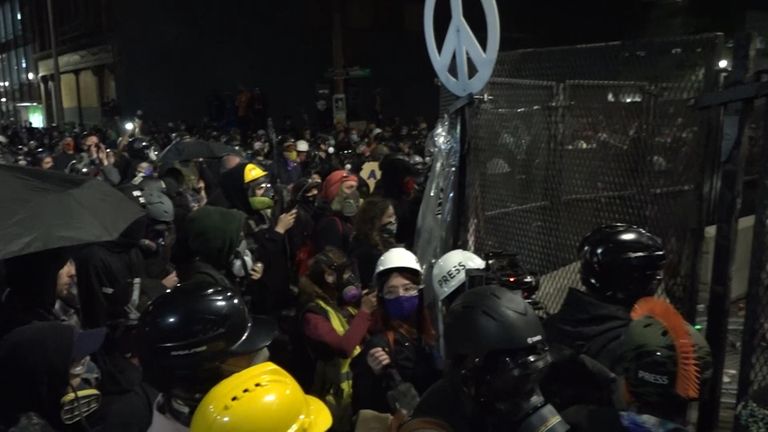

Image:For 11 nights tear gas and rubber bullets have been fired back at protesters
For 11 nights tear gas and rubber bullets have been fired back at protesters. But their response is well-coordinated, repelling the CS gas with leaf blowers, the bullets with homemade shields.
There are troublemakers here, there's no question. Some who clearly seek to antagonise and hurt the federal troops. They're not the majority but images of this violence support Donald Trump's narrative that this is a city under siege, overrun with anarchists.
The reality is very different, the picture far more complex.
Day to day life for most people has not changed, with the unrest confined to a few square blocks in the city centre.
Peaceful protesters are still by far the biggest demographic here, on the streets each evening to protest racial injustice. But after the president deployed federal troops earlier this month to protect monuments and federal property, more people have gathered to protest against their presence in the city. As many peaceful protesters leave at night, the remaining crowd gets more angry and some violent.
Opposite the federal courthouse, a park has now become a protest camp. Even here the picture is complex - mixed with the protesters are the homeless, drug addicts, and the mentally ill. A traffic cone, thrown in broad daylight at an unmarked police car, triggered a rapid response from federal police. A fragile stand-off followed between the protest camp and federal officers. Some chanted "Feds go home", others hurled abuse. It felt volatile, like it could kick off at any moment.
A young black man appointed himself mediator and bravely stood between the protesters and federal agents. The mere sight of him appealing to officers was worrying but the conversation went well and the situation was defused. The man told me he had explained the person who threw the traffic cone suffered from bipolar disorder. Without his involvement it could have ended very differently. The arrival of federal officers on the scene antagonised protesters who responded by shouting abuse. It feels on a knife edge.
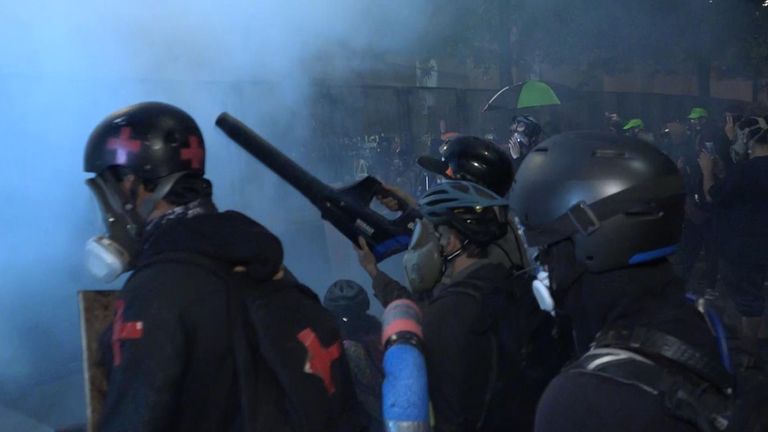
For 11 nights tear gas and rubber bullets have been fired back at protesters. But their response is well-coordinated, repelling the CS gas with leaf blowers, the bullets with homemade shields.
There are troublemakers here, there's no question. Some who clearly seek to antagonise and hurt the federal troops. They're not the majority but images of this violence support Donald Trump's narrative that this is a city under siege, overrun with anarchists.
The reality is very different, the picture far more complex.
Day to day life for most people has not changed, with the unrest confined to a few square blocks in the city centre.
Peaceful protesters are still by far the biggest demographic here, on the streets each evening to protest racial injustice. But after the president deployed federal troops earlier this month to protect monuments and federal property, more people have gathered to protest against their presence in the city. As many peaceful protesters leave at night, the remaining crowd gets more angry and some violent.
Opposite the federal courthouse, a park has now become a protest camp. Even here the picture is complex - mixed with the protesters are the homeless, drug addicts, and the mentally ill. A traffic cone, thrown in broad daylight at an unmarked police car, triggered a rapid response from federal police. A fragile stand-off followed between the protest camp and federal officers. Some chanted "Feds go home", others hurled abuse. It felt volatile, like it could kick off at any moment.
A young black man appointed himself mediator and bravely stood between the protesters and federal agents. The mere sight of him appealing to officers was worrying but the conversation went well and the situation was defused. The man told me he had explained the person who threw the traffic cone suffered from bipolar disorder. Without his involvement it could have ended very differently. The arrival of federal officers on the scene antagonised protesters who responded by shouting abuse. It feels on a knife edge.

Image:Neither side is showing any sign of backing down in Portland
Even during the day some of the scenes in Portland are surreal. In the early afternoon I see a protester running through the streets dragging a table, followed by a police car. As they reach the traffic lights they stop to yell at a police car following at a safe distance. Their destination is the federal court house, where they tell me they've been protesting with the group Riot Ribs since 30 May.
In the constant melee outside the courthouse I spot two men on the periphery who look out of place. The father and son have driven from Sandy, around 30 miles away, to see what's going on. Both voted for Donald Trump at the last election and plan to vote for him again in November. "They should just disperse them. Get it done," the father, Randy, tells me. "The election is where this ends. If he takes over the house and senate then this is going to escalate, huge." I ask if that's what he wants to happen. "No. No. I want Trump to win and I want this to go away. And if Biden wins I think it'll go away because they're going to get what they want."
Away from the square, the volatile epicentre of this unrest, I seek views from local people who aren't involved in the demonstrations. One government worker walks with me as he carries his groceries home. I ask him how he feels about what he's seeing in his city. "If the federal agents weren't here, a lot of the protesters wouldn't be either," he says. "I'm happy that people want to get out and make their voices heard because most Americans are super complacent."
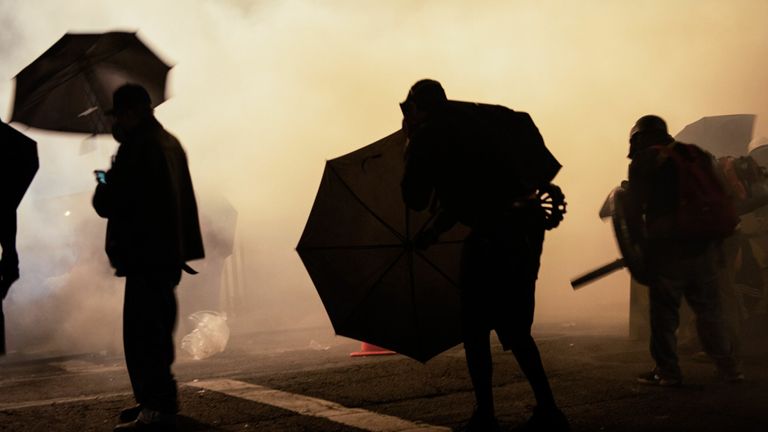
Even during the day some of the scenes in Portland are surreal. In the early afternoon I see a protester running through the streets dragging a table, followed by a police car. As they reach the traffic lights they stop to yell at a police car following at a safe distance. Their destination is the federal court house, where they tell me they've been protesting with the group Riot Ribs since 30 May.
In the constant melee outside the courthouse I spot two men on the periphery who look out of place. The father and son have driven from Sandy, around 30 miles away, to see what's going on. Both voted for Donald Trump at the last election and plan to vote for him again in November. "They should just disperse them. Get it done," the father, Randy, tells me. "The election is where this ends. If he takes over the house and senate then this is going to escalate, huge." I ask if that's what he wants to happen. "No. No. I want Trump to win and I want this to go away. And if Biden wins I think it'll go away because they're going to get what they want."
Away from the square, the volatile epicentre of this unrest, I seek views from local people who aren't involved in the demonstrations. One government worker walks with me as he carries his groceries home. I ask him how he feels about what he's seeing in his city. "If the federal agents weren't here, a lot of the protesters wouldn't be either," he says. "I'm happy that people want to get out and make their voices heard because most Americans are super complacent."

Image:Unrest is confined to a few square blocks in the city centre
A hotel worker who doesn't attend the protests either tells me he supports a lot of the reasons behind the demonstrations, despite the financial impact it's having on business. He tells me he has been affected by the tear gas at work after three canisters were deployed in the street outside. "I had to go and deliver sheets to a guest's room after being tear gassed," he says. "The reality is before the feds arrived the protests had dropped to around 100 hardcore people. The big marches had stopped and it had calmed down. Now look."
The presence of federal troops in Portland has upset many, even some who aren't demonstrating. The government has the right to protect federal buildings but it's very unusual for an administration to send in law enforcement without an invitation from local officials and the local police. That is what has happened here and this is what has made so many people so angry. The mayor of Portland and the governor of Oregon have said they're not welcome. One of the state's senators has said America is staring down the barrel of martial law.
Meanwhile, the intense stand-off between federal troops and protesters is entering a 12th night. Neither side is showing any sign of backing down - if anything they're upping the ante. It feels increasingly dangerous.
The only common ground I've found in this complex picture is that no one can see how it is going to end.
A hotel worker who doesn't attend the protests either tells me he supports a lot of the reasons behind the demonstrations, despite the financial impact it's having on business. He tells me he has been affected by the tear gas at work after three canisters were deployed in the street outside. "I had to go and deliver sheets to a guest's room after being tear gassed," he says. "The reality is before the feds arrived the protests had dropped to around 100 hardcore people. The big marches had stopped and it had calmed down. Now look."
The presence of federal troops in Portland has upset many, even some who aren't demonstrating. The government has the right to protect federal buildings but it's very unusual for an administration to send in law enforcement without an invitation from local officials and the local police. That is what has happened here and this is what has made so many people so angry. The mayor of Portland and the governor of Oregon have said they're not welcome. One of the state's senators has said America is staring down the barrel of martial law.
Meanwhile, the intense stand-off between federal troops and protesters is entering a 12th night. Neither side is showing any sign of backing down - if anything they're upping the ante. It feels increasingly dangerous.
The only common ground I've found in this complex picture is that no one can see how it is going to end.
How one of America’s whitest cities became center of BLM protests
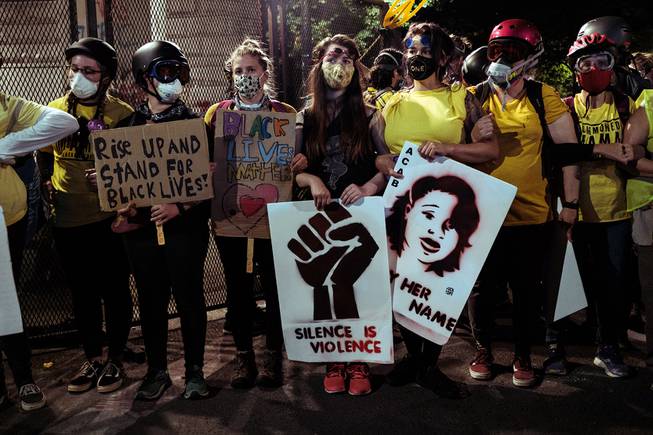
MASON TRINCA / THE NEW YORK TIMES
The Wall of Moms, a group of mothers that regularly attends the protests in Portland, Ore., on Thursday evening, July 23, 2020. Loud advocacy has been a hallmark of Portland life for decades, but unlike past protests over environmental policies or foreign wars, racism is a more complicated topic in Oregon.
By Thomas Fuller, The New York Times Company
Sunday, July 26, 2020 | 2 a.m.
PORTLAND, Ore. — Seyi Fasoranti, a chemist who moved to Oregon from the East Coast six months ago, has watched the Black Lives Matter protests in Portland with fascination. A sea of white faces in one of the whitest major American cities has cried out for racial justice every night for nearly two months.
“It’s something I joke about with my friends,” Fasoranti, who is Black, said over the din of protest chants this week. “There are more Black Lives Matter signs in Portland than Black people.”
Loud advocacy has been a hallmark of Portland life for decades, but unlike past protests over environmental policies or foreign wars, racism is a more complicated topic in Oregon, one that is intertwined with demographics and the state’s legacy of some of the most brutal anti-Black laws in the nation.
During 56 straight nights of protests here, throngs of largely white protesters have raised their fists in the air and chanted, “This is not a riot, it’s a revolution.” They have thrown water bottles at the federal courthouse, tried to pry off the plywood that protects the entrance and engaged in running battles with police officers through clouds of tear gas. In recent nights, the number of protesters has swollen into the thousands.
Damany Igwé, 43, a bath products salesman who is Black and has taken part in dozens of the protests, says white crowds have shielded him from police, all the while yelling “Black power!”
“I feel the most protected that I ever have in my city,” Igwé said during a Wednesday night protest that lasted well into Thursday morning. “White people can’t understand what we’ve been through completely, but they are trying to empathize. That’s a beginning.”
Of the 35 cities in the United States with populations larger than 500,000, Portland is the whitest, according to census data, with 71% of residents categorized as non-Latino whites.
Oregon’s relative homogeneity — the state is three-quarters white compared with neighboring California, where white people make up 37% of the population — was not accidental. The state was founded on principles of white supremacy. A 19th-century lash law called for whipping any Black person found in the state. In the early part of the 20th century Oregon’s Legislature was dominated by members of the Ku Klux Klan.
Today the average income level for Black families in Portland is nearly half that of white residents and police shootings of Black residents are disproportionate to their 6% share of the population. Three years ago, two good Samaritans were fatally stabbed while trying to stop a man from shouting slurs at two African American women on a commuter train, one of whom was wearing Muslim dress.
“Really there are two Portlands that exist,” said Walidah Imarisha, a scholar of Black history in Oregon. “There’s white Portland and Portland of color.”
The differences, she said, cover almost every aspect of life. “There’s massive racial disparities around wealth, health care, schools and criminal legal systems that white Portlanders just don’t understand.”
Yet on the streets this week in Portland there was optimism among Black protest leaders who generally spoke admiringly of the large white crowds, which were reinvigorated last week after clashes with federal riot police officers who are protecting a U.S. courthouse and other buildings.
Xavier Warner, a Black protest organizer, called the predominance of white protesters “a beautiful thing” that speaks to the progressive ethos in the city.
Teal Lindseth, another Black organizer, said she saw the irony in predominantly white Portland having among the longest continuous protests stemming from the police killing of George Floyd in Minneapolis on May 25. But she said she was thankful for the strength in numbers. “They hurt us less when there are more people,” she said.
The role of white protesters has some detractors in the Black community.
In an op-ed published Thursday in The Washington Post, the Rev. E.D. Mondainé, president of the Portland branch of the NAACP, called the protests a “spectacle” that distracted attention from the Black Lives Matter movement.
“Are they really furthering the cause of justice, or is this another example of white co-optation?” he wrote.
But in a measure of the divided opinion on this question, Mondainé’s predecessor at the NAACP, Jo Ann Hardesty, a city commissioner, rejected his criticism.
“There’s a lot of new, aware folks who have joined into the battle for Black lives,” she said during a news conference Thursday.
Hardesty, who took office in 2019 as the first African American woman on the Portland City Council, said the protests were serving the dual purposes of fighting racial injustice and rejecting the presence of federal agents sent to the city by the Trump administration.
Both protest goals were important, she said. “And one is not any more important than the other.”
Joe Lowndes, an expert on right-wing politics and race at the University of Oregon, said the protests reflected an intertwining of interests in recent years between racial justice advocates and the largely white anti-fascist movement. Both are deeply distrustful of police and want police powers and budgets curtailed. The presence of far-right groups in Oregon, emboldened during the Trump administration, has also brought anti-racists and anti-fascists into closer alignment, he said.
Speeches and chants at the protests have touched on the legacy of slavery and the stripping of lands from Native Americans. From a historical perspective, the sight of hundreds of white protesters chanting one of that movement’s most popular refrains — “Stolen lands and stolen people” — can be jarring.
As the destination of the Lewis and Clark expeditions, Oregon once symbolized the conquest of the American West and the subjugation of Native peoples.
Some white protesters said it was this white supremacist legacy that helped spur them into the streets.
“Bringing that history to light is definitely a motivating factor,” said Liza Lopetrone, a veterinary nurse who joined the Wall of Moms protest this week that consisted mostly of white women locking arms in the face of the federal troops. “Oregon has an extremely racist history. I’m not from here but I take responsibility for it now.”
Another woman at the protest, Julie Liggins, had a more immediate connection to prejudice and racism in Portland. She is white and her husband of three decades, Reginald, is Black.
During the years he drove his car to work, Liggins said, he was pulled over by Portland police multiple times without cause. He said he switched to riding the bus. But two years ago when Liggins, who is 60, ran to catch a bus, the police pulled it over after misidentifying him for a robbery suspect in his 20s.
Liggins said he was encouraged by the protests even if he wished the reckoning over race in America had occurred earlier. And he loves his life in Portland.
“You can literally go days without seeing people that look like you,” he said. “But I find Portland to be a very progressive city despite its racist past. I can honestly say that as an interracial couple we haven’t had any problems here.”
Fasoranti, the chemist, says he has been impressed with the awareness of racial issues in Portland and described the current round of protests as something that “feels genuine.”
He says he feels welcome in the city and was intrigued soon after he arrived when a white motorist pulled over to the sidewalk and asked if he needed a ride. He has been invited to conversations about gentrification and the displacement of Black residents.
“There are less of these conversations in New York or New Jersey, where I used to live,” he said.
Dozens Of Anti-Racism Protesters Arrested And 21 Officers Injured In Seattle Following Clashes
Updated Jul 26, 2020, 07:28am EDT
Some 45 protesters were arrested in Seattle on Saturday amid the city’s largest anti-racism protest in recent weeks following Trump’s expansion of federal agents to the city, while 21 police officers were wounded in clashes with demonstrators.
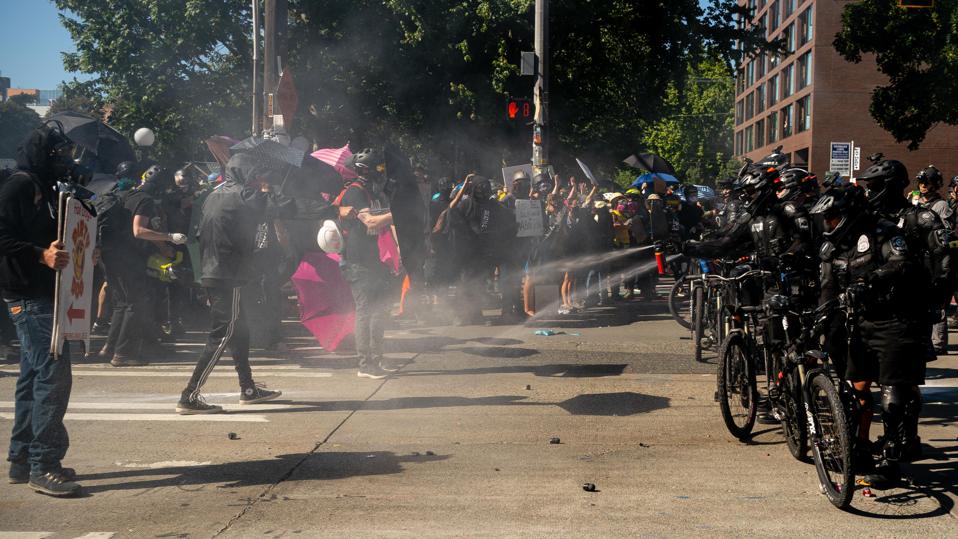
Police use pepper spray as non-lethal munitions litter the street during protests in Seattle on July ... [+] GETTY IMAGES
KEY FACTS
Seattle Police made 45 arrests by 10 p.m. on Saturday “in connection with today’s riot for assaults on officers, failure to disperse, and obstruction,” the department said.
It added that 21 officers had been injured, but “most were able to return to duty.”
Demonstrators had gathered at Seattle’s Cal Anderson Park on Capitol Hill on Saturday afternoon, before marching on Broadway.
Police said that around two hours later at 4 p.m., demonstrators reached the King County Youth Service Center, where some protesters set alight a construction site at the facility.
Officers added that some demonstrators broke windows of buildings along 12th Avenue, and caused damage to the perimeter of the police department’s East Precinct.
Officers say they used “less-lethal” equipment including “OC spray, blast balls, and 40mm sponge rounds,” but say they did not use tear gas.
Saturday’s protests follow clashes between anti-racism protesters and federal agents in nearby Portland, Oregon, after Trump sent in federal officers to crack down on violent crime, angering local officials.
KEY BACKGROUND
Saturday’s protests in Seattle, which were later declared a riot by Seattle Police Department, follow sustained protests in nearby Portland, Oregon, where demonstrators are standing against federal agents sent in by the Trump administration. Trump on Thursday declared that federal officers would be sent into Seattle, among other cities, in an expansion of Operation Legend, which has seen him deploy federal agents to crack down on violent crime as anti-racism protests continue. But the presence of federal agents has angered local officials who accused the President of using excessive force. Anticipating violent clashes this weekend, Seattle Mayor Jenny Durkan said at a press conference on Friday: “I cannot overstate it enough, what is happening is frightening to me...It is frightening that you would use federal agents for political purposes.”
TANGENT
Black militia group NFAC marched through Louisville, Kentucky armed on Saturday, demanding justice for 26-year-old unarmed Black woman Breonna Taylor. Three protesters were taken to hospital with non life-threatening injuries after a weapon was accidentally fired.
Taylor, an emergency medical technician, was fatally shot by officers in March after they entered her Louisville home using a “no-knock” warrant. Celebrities including Beyoncé and, most recently, LeBron James, have called for the cops involved in her shooting to be arrested.
2020 Forbes Media LLC. All Rights Reserved.
Updated Jul 26, 2020, 07:28am EDT
Some 45 protesters were arrested in Seattle on Saturday amid the city’s largest anti-racism protest in recent weeks following Trump’s expansion of federal agents to the city, while 21 police officers were wounded in clashes with demonstrators.

Police use pepper spray as non-lethal munitions litter the street during protests in Seattle on July ... [+] GETTY IMAGES
KEY FACTS
Seattle Police made 45 arrests by 10 p.m. on Saturday “in connection with today’s riot for assaults on officers, failure to disperse, and obstruction,” the department said.
It added that 21 officers had been injured, but “most were able to return to duty.”
Demonstrators had gathered at Seattle’s Cal Anderson Park on Capitol Hill on Saturday afternoon, before marching on Broadway.
Police said that around two hours later at 4 p.m., demonstrators reached the King County Youth Service Center, where some protesters set alight a construction site at the facility.
Officers added that some demonstrators broke windows of buildings along 12th Avenue, and caused damage to the perimeter of the police department’s East Precinct.
Officers say they used “less-lethal” equipment including “OC spray, blast balls, and 40mm sponge rounds,” but say they did not use tear gas.
Saturday’s protests follow clashes between anti-racism protesters and federal agents in nearby Portland, Oregon, after Trump sent in federal officers to crack down on violent crime, angering local officials.
KEY BACKGROUND
Saturday’s protests in Seattle, which were later declared a riot by Seattle Police Department, follow sustained protests in nearby Portland, Oregon, where demonstrators are standing against federal agents sent in by the Trump administration. Trump on Thursday declared that federal officers would be sent into Seattle, among other cities, in an expansion of Operation Legend, which has seen him deploy federal agents to crack down on violent crime as anti-racism protests continue. But the presence of federal agents has angered local officials who accused the President of using excessive force. Anticipating violent clashes this weekend, Seattle Mayor Jenny Durkan said at a press conference on Friday: “I cannot overstate it enough, what is happening is frightening to me...It is frightening that you would use federal agents for political purposes.”
TANGENT
Black militia group NFAC marched through Louisville, Kentucky armed on Saturday, demanding justice for 26-year-old unarmed Black woman Breonna Taylor. Three protesters were taken to hospital with non life-threatening injuries after a weapon was accidentally fired.
Taylor, an emergency medical technician, was fatally shot by officers in March after they entered her Louisville home using a “no-knock” warrant. Celebrities including Beyoncé and, most recently, LeBron James, have called for the cops involved in her shooting to be arrested.
2020 Forbes Media LLC. All Rights Reserved.

White Americans got their stimulus checks more promptly than Blacks and Hispanics
AIMEE PICCHI
Jul 22, 2020 | Community
More than 150 million Americans have received federal “stimulus checks” this year to help them weather the epic economic collapse caused by the coronavirus pandemic. Yet some of the neediest groups have found themselves at the back of the line when it comes to getting the government payments, a new analysis finds.
More White households received their checks by late May than Black households, while a greater share of middle-class consumers got their checks faster than poor Americans, according to a study by the Urban Institute. Among the “significant disparities” experienced in the stimulus rollout is that three-quarters of White adults received their checks by late May, compared with 69% of Black adults and 63% of Hispanic adults, the centrist think tank concluded.
The issues may reflect structural economic and racial inequities, with median Black families in the U.S. earning about 59 cents for every dollar earned by the median White household. At the same time, people of color are more likely to be “unbanked” than White consumers. That could help explain the delays in some people getting a stimulus check because the first wave of payments went to taxpayers who had their bank account information on file with the IRS.
Consumers who don’t file federal income taxes, including some low-income households and some people on Social Security, also had longer waits for their stimulus checks.
“Adults were less likely to receive the payments if they had family incomes below 100% of [the Federal Poverty Line] or if they were Black or Hispanic, and particularly if they were Hispanic and in families with noncitizens,” the Urban Institute’s Janet Holtzblatt and Michael Karpman wrote.
Only 59% of households at or below the poverty level got their checks by late May, compared with 85% of households with earnings of between two-and-half to four times the poverty line, the analysis found. The Urban Institute based its finding on a survey of more than 4,000 adults between May 14 through 27.
While the stimulus check program appeared simple on its face — to deliver direct payments of $1,200 to individuals who earn less than $75,000 annually and $2,400 to married couples with combined incomes below $150,000 — the execution proved anything but. Consumers struggled to get information from the IRS’ “Get My Payment” site, while Social Security recipients reported delays. American citizens who are married to immigrants without Social Security numbers were also blocked from receiving the payments.
The findings also raise questions about whether there are more effective methods for distributing economic support to Americans who are outside of the tax system, the Urban Institute noted. For instance, programs that already support low-income households, like Medicaid or food stamps, could be used to help channel support to people who might fall through the cracks at the IRS.
To be sure, most families received their payments within two months of Congress passing the $2.2 trillion Coronavirus Aid, Relief and Economic Security Act, the March law that authorized the stimulus checks. But the difficulty reaching people who don’t file taxes, as well as unbanked Americans and people who lack internet access, highlight the issues that stymied the rollout, the report authors said.
The barriers are “related to challenges that do not have simple solutions and, to a large extent, reflect systemic problems as well as the uniqueness of a pandemic,” according to Urban.
First published on July 16, 2020 / 2:54 PM
© 2020 CBS Interactive Inc.. All Rights Reserved

First Protests: Now Action
July 25, 2020
July 25, 2020
My sincere condolence to the Breonna Taylor, George Floyd and Ahmaud Arbery families as well as other families who have lost their daughters and sons due to police brutality. I support the peaceful protesters who are dealing with these ongoing issues and are demanding change. Equally important, they want Freedom, Justice, and Equality for all people not just the privileged people. African Americans want change and they want it now. It is very unfortunate that we have a President who is dividing our country and feels that he has the power to do whatever he wants without any repercussions. He feels he is untouchable! We must change that through the power of our votes!
In-spite of the COVID-19, civic unrest, police brutality and racism, we must not lose our focus, which is the power of the vote. Local, County, State and National elections are coming up. It is imperative that we vote President Trump out of office in November 2020 as well as other elected officials who do not support Freedom, Justice Equality for all people. President Trump has done so much damage to himself that his re-election campaign is in a serious deep free fall now. We do not want to do anything that will help re-ignite his election campaign (i.e., looting, burning & destroying property, which is caused by outside agitators). I understand the anger and frustration. I agree, it does not seem like our voices are being heard. No matter what statistic we look at we are always impacted worse than anyone else. Yes, I agree, We Are Tired of Dying. Can this problem be fixed? I say yes!
I am going to recommend some things that we must do. This is not an exclusive list. However, it is the start which can be revised and things can be added as we move forward.
- We must vote, encourage others to register and educate people on how to vote.
- We must run for office at the Local, County, State, and National levels. We must push for diversity and representation at all levels for business, government, educational institutions, non-profits etc.
- Currently 95% of all District Attorneys and 80% of all policemen are white nation-wide. These organizations must be diversified to represent all people. This must change if we expect charges and convictions to be filed against corrupt policewomen and policemen in-order to clean-up the police department and reduce and or eliminate police brutality against Black and Brown people. Nonetheless, we must not paint all District Attorneys, policewomen and policemen with the same brush. There are good District Attorneys, policewomen and policemen too.
- We must create a plan for what we want our elected officials to do for our respected communities and hold them accountable. If they do not do what they promise, we must engage them to deliver on their promises to their constituents. If things do not change, we must either recall them or vote not to reelect them.
- If one does not already exist, we must create Police Oversight Commission Review Boards and join them. This will ensure that police are there in our communities to protect and serve the people.
- Part of the police reform should include policewomen/policemen living in the cities that they serve and complaints regarding them should be reviewed by the Police Oversight Commission Board and appropriate action taken.
- We must attend City Council meetings, School Board meetings and join various Commissions within your respected communities. We must have ongoing dialogue with our Governor, District Attorneys, Police Chiefs, Mayors, Congressmen / Congresswomen, Senators, and judges. We elect these officials and they are here to serve the people. We must insist on them cleaning up our communities, improving the quality of life and bringing business and other resources to our communities that are needed. If they do not, we must vote them out of office.
- We must interact with Head-start, Pre-school, and K through 12 to ensure that our children are receiving a quality education in-order to be successful in Junior Colleges, State Colleges and Universities. This will help them prepare for successful jobs that will enable them to provide a quality life for their families and be able to participate in the American Dream of owning a home, saving, and sending their children to college, etc.
- We must ensure that we have access to health care, affordable Housing, jobs that pay a living wage not minimum wage for adults. Job and vocational training need to be added back to high schools’ curriculums. We must insist that we do not spend more money to incarcerate our children than we do to educate them. We must ensure that our schools have the technology, resources, support, infrastructure, and well compensated teachers to provide a quality education to our children. We must provide after school programs and summer jobs for our youths.
- We must join organizations whose missions are Freedom, Justice and Equality for all people. We must work to reform our criminal justice system so that it does not continue to criminalize Black and Brown people. We must become entrepreneurs and develop Educational, Political and Economic clout within our communities. Lastly, we must tear down institutional structural racism within our country. I may not live to see it, but it must be done. I am going to help start it.
James P. Shirley
Mentor / Civil Rights / Community Activist
SAN FRANSISCO
Protesters stumble on police standoff during Mission District march

Protesters at the scene of a standoff between police and a man with a metal pipe on July 24, 2020. (Nicholas Chan/Special to S.F. Examiner)
A Black Lives Matter march in San Francisco on Friday protesting police brutality paused to confront and surround police during a standoff with a man armed with a metal pipe.
The protesters began their rally Friday afternoon at Duboce Park and made a stop at the Mission Police Station, holding placards that read “Black Lives Matter,“ “Abolish the Police,” and “No Justice No Peace.”
As the protesters left the Mission Police Station, they encountered a standoff between police officers and a man on 18th Street and San Carlos streets. Instead of heading towards Dolores Park as they had planned, many of the protesters arrived near the scene.
“Let him go,” the protesters yelled as they stood behind the police barricade tape, demanding social workers to resolve the situation. The protesters then observed the scene quietly to prevent further distressing the man.

Police engaged in a standoff with a man wielding a metal pipe on July 24, 2020. (Nicholas Chan/Special to S.F. Examiner)
Officers had responded to the incident earlier that day at about 11:34 a.m.. Police said the man with a metal bar refused to drop it and made threatening statements. As officers determined that he was suffering from a mental health crisis, police said, the SFPD crisis negotiation team began talking to the man.
After a nearly eight-hour standoff, officers took the man into custody without injury.
One staffer from the Department of Public Health had been present at the scene and a DPH clinical psychologist and crisis intervention specialist arrived later, accompanying the man to a local hospital for a mental health evaluation, Mission Local reported.
The protesters had first gathered at Duboce Park earlier that afternoon and planned to march to Dolores Park. Maryann Jenkins, 30,, a co-organizer of the rally said she was inspired by the young protesters who organized the march to Oakland Mayor Libby Schaaf’s house last month and demanded that the city defund the police.

Nestor Reyes, 28, co-organizer of the rally, spoke to the crowd at Duboce Park (Nicholas Chan/Special to S.F. Examiner)
“We’re fighting for what we’re witnessing, which is a lot of unnecessary police brutality, especially with what’s going on in Portland,” she added, referring to federal law enforcement officers recently deployed in Portland, Oregon.
Among those who called to defund the police was Christian Barnes, 22, a resident of San Francisco, who echoed the sentiments of others across the nation since the killing of George Floyd by Minneapolis police in May.
“We wake up every morning hearing about the same old thing: The police taking down the good people of the community,” Barnes said.
“What we are here to do is to uplift everyone’s spirit by marching and cheering on what we feel is right for this community … Police brutality has been around for as many years as we can count and they haven’t learned a damn thing,” he added.
Co-organizer of the rally Elio Ervin, 31, spoke to the crowd at Duboce Park, paying homage to Floyd and Breanna Taylor, who was killed by police in Louisville, Kentucky, along with Iyanna Dior, a trans woman brutally attacked by a group of men in Minnesota.
“Let’s continue standing up and speaking for each and every one of them,” Ervin said.

Protesters rallied outside Mission Police Station. (Nicholas Chan/Special to S.F. Examiner)
Protesters stumble on police standoff during Mission District march

Protesters at the scene of a standoff between police and a man with a metal pipe on July 24, 2020. (Nicholas Chan/Special to S.F. Examiner)
NICHOLAS CHAN
Jul. 25, 2020
Jul. 25, 2020
A Black Lives Matter march in San Francisco on Friday protesting police brutality paused to confront and surround police during a standoff with a man armed with a metal pipe.
The protesters began their rally Friday afternoon at Duboce Park and made a stop at the Mission Police Station, holding placards that read “Black Lives Matter,“ “Abolish the Police,” and “No Justice No Peace.”
As the protesters left the Mission Police Station, they encountered a standoff between police officers and a man on 18th Street and San Carlos streets. Instead of heading towards Dolores Park as they had planned, many of the protesters arrived near the scene.
“Let him go,” the protesters yelled as they stood behind the police barricade tape, demanding social workers to resolve the situation. The protesters then observed the scene quietly to prevent further distressing the man.

Police engaged in a standoff with a man wielding a metal pipe on July 24, 2020. (Nicholas Chan/Special to S.F. Examiner)
Officers had responded to the incident earlier that day at about 11:34 a.m.. Police said the man with a metal bar refused to drop it and made threatening statements. As officers determined that he was suffering from a mental health crisis, police said, the SFPD crisis negotiation team began talking to the man.
After a nearly eight-hour standoff, officers took the man into custody without injury.
One staffer from the Department of Public Health had been present at the scene and a DPH clinical psychologist and crisis intervention specialist arrived later, accompanying the man to a local hospital for a mental health evaluation, Mission Local reported.
The protesters had first gathered at Duboce Park earlier that afternoon and planned to march to Dolores Park. Maryann Jenkins, 30,, a co-organizer of the rally said she was inspired by the young protesters who organized the march to Oakland Mayor Libby Schaaf’s house last month and demanded that the city defund the police.

Nestor Reyes, 28, co-organizer of the rally, spoke to the crowd at Duboce Park (Nicholas Chan/Special to S.F. Examiner)
“We’re fighting for what we’re witnessing, which is a lot of unnecessary police brutality, especially with what’s going on in Portland,” she added, referring to federal law enforcement officers recently deployed in Portland, Oregon.
Among those who called to defund the police was Christian Barnes, 22, a resident of San Francisco, who echoed the sentiments of others across the nation since the killing of George Floyd by Minneapolis police in May.
“We wake up every morning hearing about the same old thing: The police taking down the good people of the community,” Barnes said.
“What we are here to do is to uplift everyone’s spirit by marching and cheering on what we feel is right for this community … Police brutality has been around for as many years as we can count and they haven’t learned a damn thing,” he added.
Co-organizer of the rally Elio Ervin, 31, spoke to the crowd at Duboce Park, paying homage to Floyd and Breanna Taylor, who was killed by police in Louisville, Kentucky, along with Iyanna Dior, a trans woman brutally attacked by a group of men in Minnesota.
“Let’s continue standing up and speaking for each and every one of them,” Ervin said.

Protesters rallied outside Mission Police Station. (Nicholas Chan/Special to S.F. Examiner)
San Francisco resident Charles Nelson, 57, criticized the system of mass incarceration of Black people as he said many struggle to adapt to life after spending time behind bars.
“If the institution of incarceration was in fact to rehabilitate people, once you leave the system, then you would be able to rebuild your life as a productive citizen of the United States of America,” Nelson said. “That doesn’t happen. It’s the new Jim Crow.”
Since the killing of Floyd in May, a number of protests have taken place in San Francisco. Protesters also rallied at City Hall Monday in a union-led protest supporting Black lives and speaking out against the widening inequalities during the coronavirus pandemic. Earlier this month, some people celebrated Fourth of July by marching for affirmative action and rallying against police brutality. And protesters rallied across The City to mark the Juneteenth holiday, a celebration of the end of slavery in the United States.

A police officer stands inside the Mission Police Station observing protesters who gathered outside the building. (Nicholas Chan/Special to S.F. Examiner)
Nester Reyes, a 28-year old co-organizer of the rally, urged people in an interview with The Examiner to read “How To Be An Antiracist,” by Ibram X. Kendi, along with books by female Black authors like Audre Lorde or Gloria Jean Watkins, also known as bell hooks.
“San Francisco can be a huge influence in how things change throughout the whole country. It’s because not only do we have the numbers,” Reyes said. “but we also have the open-mindedness and education to respect all people for who they are and where they come from, [and] to understand that we live in a nation that can be free without any borders.”

. (Nicholas Chan/Special to S.F. Examiner)
“If the institution of incarceration was in fact to rehabilitate people, once you leave the system, then you would be able to rebuild your life as a productive citizen of the United States of America,” Nelson said. “That doesn’t happen. It’s the new Jim Crow.”
Since the killing of Floyd in May, a number of protests have taken place in San Francisco. Protesters also rallied at City Hall Monday in a union-led protest supporting Black lives and speaking out against the widening inequalities during the coronavirus pandemic. Earlier this month, some people celebrated Fourth of July by marching for affirmative action and rallying against police brutality. And protesters rallied across The City to mark the Juneteenth holiday, a celebration of the end of slavery in the United States.

A police officer stands inside the Mission Police Station observing protesters who gathered outside the building. (Nicholas Chan/Special to S.F. Examiner)
Nester Reyes, a 28-year old co-organizer of the rally, urged people in an interview with The Examiner to read “How To Be An Antiracist,” by Ibram X. Kendi, along with books by female Black authors like Audre Lorde or Gloria Jean Watkins, also known as bell hooks.
“San Francisco can be a huge influence in how things change throughout the whole country. It’s because not only do we have the numbers,” Reyes said. “but we also have the open-mindedness and education to respect all people for who they are and where they come from, [and] to understand that we live in a nation that can be free without any borders.”

. (Nicholas Chan/Special to S.F. Examiner)
Subscribe to:
Posts (Atom)


